#El Escorial Monastery Library
Explore tagged Tumblr posts
Text

... endless amount of knowledge ...
The Royal Library of El Escorial, San Lorenzo de El Escorial, Spain
Near Madrid, the library is part of the Royal Monastery of San Lorenzo de El Escorial. The library contains a rich collection of manuscripts and is a masterpiece of Spanish Renaissance architecture.
#endless amount of knowledge#library#books#the royal library of el escorial#san lorenzo de el escorial#spain
19 notes
·
View notes
Text
First of all, thank you for following the bookscans posts, I hope you're enjoying them. Now I wanted to share some extra facts related to the third part, like the Tudmir Pact and more about Abd al-Aziz and Egilona, so here we go:
• The Tudmir pact
The pact between Teodomiro and Abd al-Aziz was signed on April 5, 713 and its text is:
In the Name of Allah, the Gracious, the Merciful. Edict of 'Abd al-'Aziz ibn Musa ibn Nusair to Tudmir ibn Abdush [Theodomir, son of the Goths]. The latter obtains peace and receives the promise, under the guarantee of God and his prophet, that his situation and that of his people will not be altered; that his subjects will not be killed, nor taken prisoners, nor separated from their wives and children; that they will not be prevented from practicing their religion, and that their churches will not be burned or deprived of the objects of worship that are in them; all this as long as it satisfies the obligations we impose on it. Peace is granted with the delivery of the following cities: Uryula [Orihuela], Baltana, Laqant [Alacant], Mula, Villena, Lurqa [Lorca] and Ello. Furthermore, you must not give refuge to anyone who flees from us or is our enemy; nor cause harm to anyone who flees from us or is our enemy; nor cause harm to anyone who enjoys our amnesty; nor hide any information about our enemies that may come to their knowledge. He and his subjects will pay an annual tribute, each person, of one dinar in cash, four measures of wheat, barley, grape juice and vinegar, two of honey and two of olive oil; for the servants, only a measure. Given in the month of Rajab, year 94 of the Hegira [713]. As witnesses, 'Uthman ibn Abi 'Abda, Habib ibn Abi 'Ubaida, Idris ibn Maisara and Abu l-Qasim al-Mazali.
Various versions of the Pact of Tudmīr are known, all of them are not contemporary and it seems that the pact had an important impact, since there are manuscripts about It writen by some authors throughout the Middle Ages, the oldest by geographer Abu al-Abbás Áhmad ibn Úmar al-Uḏrī (Dalías, Almería, 1003- Almería or Valencia, 1085), those by Abū Ja'far Aḥmad ibn Yaḥyā ibn Aḥmad ibn 'Amirah al-Ḍabbī (Vélez-Rubio or Vélez-Blanco, Almería, 1155/1156- Murcia, 1203), Abu Hamid al-Garnāṭī (Granada, 1256-Cairo, 1344) and Ibn Abd-al-Múnim al-Ḥimyarī (Ceuta, 15th century- ?, 1495).
At the library of the Royal Monastery of San Lorenzo de El Escorial is preserved the manuscript of the al-Ḍabbī version of the pact (well, plus some annotations in Spanish from early 19th century) in his work Bughyat al-multamis fī tārīkh rijāl ahl al-Andalus (Wish fulfilled of the one who investigates, about the history of the men of al-Andalus), which is part of the Arabic manuscripts collection held at El Escorial (in the web you can find 153 digitalized manuscripts), started by Phillip II of Spain during the 16th century.
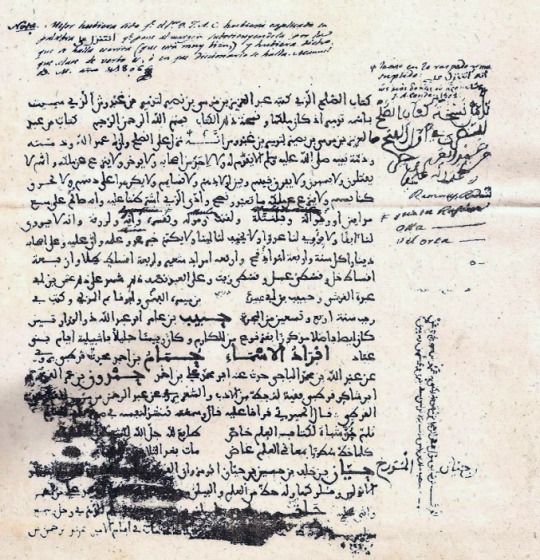
Btw this Arabic manuscript collection is the topic of one of the chapters of the book De Mayrit a Madrid (From Mayrit to Madrid), one of the books that is on the bookscans list, so if you want to know more about this topic, wait for when I share its bookscans.
And for ending with the Tudmir Pact, here's a map showing the cities included in the pact:

• Abd al-Aziz and Egilona
Note: The genealogical links listed below might not be 100% exact, because some data varies depending on the source. Sorry if it's a bit messy, genealogy is complicated (specially if Royal families are involved)
An interesting fact is that some sources point that Abd al-Aziz's mother was Umm bint Marwan ibn al-Hakam, a daughter of Caliph Marwan I, making Abd al-Aziz (born in 685) one of the grandsons of the 4th Umayyad Caliph of Damascus.
During the conquest, Abd al-Aziz and Egilona married in 713. Due to the name Umm'Asim Egilona is sometimes given, it's known that they had a son, although it's not known anything more about him, and they had a daughter too, Aïsha.

After the death of Musa ibn Nusayr in 715, Abd al-Aziz started to mistrust the new Caliph Suleyman, as its possible that the Caliph ordered to murder Musa.
The relationship between the Caliph and Abd al-Aziz was tense, since Abd al-Aziz's title of governor of Al Andalus was given by his father Musa ibn Nusayr, not by the Caliph, so Sulayman was afraid of a possible uprising and Abd al-Aziz turning Al Andalus into an independent territory. As it is possible that Egilona suggested Abd al-Aziz to crown himself and turn away from the caliphate, or at least that were the rumours, and that alleged conspiracy led to Sulayman sending Ziyad ibn Udhara to murder Abd al-Aziz in Seville in 716.
It is not known exactly when Egilona died, although is likely the year of her death is after 718. About their daughter Aïsha bint Abd al-Aziz, she eventually married Fortún ibn Qasi, governor of Zaragoza and the Ebro valley and head of the Banu Qasi, and had two sons Zahir and Musa ibn Fortun, the later married Oneka of Pamplona. They had two sons, Mutarrif and Musa ibn Musa, whom later in the book AL ANDALUS. Historical figures there will be a chapter about (the chapter Musa ben Musa ben Qasi, the third King of Spain). Musa ibn Musa's domains were occasionally independent from the Umayyad emirate of Córdoba since he and his descendants allied with either the emirate or with Christians like the future kingdom of Navarre, whose Royal family had blood ties with the Banu Qasi, some of them being:
- Eneko Aritza, Lord "King" of Pamplona, was Musa ibn Musa's brother, since Eneko was the son Oneka had with her first husband Eneko Semenoitz
- Asona Enekoitz, one of the daughters of Eneko Aritza, niece and wife of Musa ibn Musa. Their children were Lubb ibn Musa, Mutarrif ibn Musa, Fortún ibn Musa and Awriya bint Musa
- Belasquita Garcés of Pamplona, daughter of Eneko Aritza's son, García. She was Musa ibn Musa's daughter-in-law since he married Mutarrif ibn Musa ibn Musa.
- Fortún Garcés, son of Eneko Aritza's son García. Fortun married Awriya bint Lubb ibn Musa, daughter of Lubb ibn Musa and an Arab noblewoman Ayab al-Bilatiyya. Their children were Eneko, Aznar, Belasko, Lope and Oneka.
- Oneka Fortúnez, daughter of Fortún Garcés and Auria/Awriya bint Lubb. Oneka Fortúnez married twice, she firstly wed the Emir Abd Allah I of Córdoba, she was known as Durr (Pearl), their children being Muhammad, Zayd, al-Baha' and Fatima, Muhammad's son was the first Caliph of Córdoba, Abd al-Rahman III; then Oneka married her cousin Aznar Sánchez.
Descendants by MUHAMMAD
- Muhammad, son of Emir Abd Allah I of Córdoba and Oneka Fortúnez, he had Abd al-Rahman III with a Basque woman, Muzna.
- Abd al-Rahman III, 8th Emir and first Caliph of Córdoba. He had several wifes and concubines, and many children, but the one who succeeded him was al-Hakam II, one of the sons he had with one of his wifes, a Christian captive called Maryam.
- Al-Hakam II, 2nd Caliph of Córdoba, son of Abd al-Rahman III and Maryam. Al-Hakam was succeeded by Hisham II, a son he had with the concubine, Subh al-baskunsiyya, a Basque woman named Aurora, but then she took the name Subh.
- Hisham II, 3th Caliph of Córdoba, son of al-Hakam II of Córdoba and Subh. He firstly was overthrown by Muhammad II, and became Caliph again after the second rule of Muhammad ended.
-Muhammad II, 4th Caliph of Córdoba, son of Hisham, who was son of Abd al-Yabbar, one of Abd al-Rahman III's sons. He overthrew Hisham II, but Muhammad II was overthrown by Suleyman al-Mustaín, and Muhammad II started his second rule after he overthrew Suleyman. Muhammad II's sons were Abd al-Rahman IV and Hisham III.
- Suleyman, 5th Caliph of Córdoba, son al- Hakam, who was son of Suleyman, one of Abd al-Rahman III's sons. After Hisham II died, Suleyman's second rule started, but he was defeated and killed by the governor of Ceuta, Alí ibn Hamud al-Násir, who became the 6th Caliph of Córdoba and first Caliph of the Banu Hamud dinasty.
- Abd al-Rahman IV, 7th Caliph of Córdoba, son of Muhammad II. After Ali ibn Hamud was murdered, he was proclaimed Caliph, although it was después with Ali ibn Hamud's brother Al-Qásim, and after Abd al-Rahman IV died, Al-Qásim fully became the 8th Caliph of Córdoba.
- Abd al-Rahman V, 10th Caliph of Córdoba, brother of Muhammad II. After the second rule of Al-Cásim ended, he became Caliph, but he was murdered a year later. He was succeeded by his cousin Muhammad III.
- Muhammad III, 11th Caliph of Córdoba, son of Abd al-Rahman, who was son of Ubayd Al-lah, one of Abd al-Rahman III's sons. He had a daughter with the slave Amin'am, who was Wallada bint al-Mustakfi. Muhammad died, and Ali ibn Hamud's son, Yahya al-Muhtal returned.
- Hisham III, 12th Caliph of Córdoba, son of Muhammad II. He became Caliph when Yahya al-Muhtal was overthrown and his second rule ended. After some years, Hisham III was overthrown during a popular uprising, the Caliphate of Córdoba was abolished, so Hisham was the last Caliph of Córdoba, and the first period of Taifas began.
- Wallada bint al-Mustafki, the only child of Muhammad III, became a famous poetress. Wallada inherited her father's assets when he died and she opened her palace to the education of women from good families to women of low status and even slaves; poets and writers also attended. Among her students, Muhya bint al-Tayyani stands out, a poetress of very humble status. Wallada welcomed her into her palace, and it is said that they were lovers.
It is known that she embroidered her verses on her dresses, being the most well-known: "By Allah, I deserve any greatness/ and I proudly continue my path/ I gladly give my lover my cheek / and I give my kisses to whoever wants them"; and she did not veil on the street. Wallada participate in men's competitions, in one of them she met the poet Ibn Zaydún, with whom she had a passionate love story, as is it shown in several of their poems. Wallada had other lovers like Ibn Abdus, but she never married.
(Mental Note: I have to dedicate a post to Wallada's poetry someday)
Descendants by AZNÁR SANCHEZ
- Toda Aznárez, daughter of Oneka Fortúnez with her second husband Aznar Sánchez. Toda married Sancho I of Pamplona, a distant cousin and first official King of Pamplona. Their children were García I of Pamplona (married Countess Andregoto I of Aragon, their son was Sancho II of Pamplona), Urraca (married Ramiro II of Leon), Oneka (married Alfonso IV of León, their son was Ordoño IV), Sancha (married Ordoño II of León, their son was Sancho I) , Belasquita and Orbita (married al-Tawil, governor of Huesca).
- Sancho II of Pamplona, García I and Andregoto's son, married Urraca Fernández, daughter of Fernán González, Count of Castile. Among their children were García II of Pamplona and Urraca. Urraca married Al-Mansur, hayib of Caliph Hisham II of Córdoba, and she took the name Abda, and was the mother of Abd al-Rahman Sanŷul (or Sanchuelo), who became hayib of Hisham II after his brother ʿAbd al-Málik al-Muẓáffar (son of Al-Mansur and Al-Dalfāʾ) died. Abd al-Rahman Sanchuelo had a son, Abd al-Aziz ibn Ámir, who, after the of the Caliphate was splitted into Taifas, became Emir of the Taifa of Valencia. Abd al-Aziz was succeeded by his son Abd-al-Malik, but Abd-al-Malik was overthrown by Al-Mamún, Emir of the Taifa of Toledo.
- García II of Pamplona was succeeded by his son Sancho II of Pamplona, who married Muniadona of Castile, and they were parents of García III of Pamplona (ancestors of the Kingdom of Navarre) and Ferdinand I of Leon, who married Sancha of Leon, who was the great-great-grandaughter of Ramiro II of Leon (ancestors of the Crown of Castile and the Kingdom of Portugal, via their son Alfonso VI of Leon). Plus Sancho II of Pamplona had a son out of wedlock, Ramiro I of Aragon (ancestors of the Crown of Aragon)
#al andalus#historyblr#pact of tudmir#al andalus. historical figures#al andalus. personajes históricos#abd al-aziz ibn musa#abd al-aziz#teodomiro#tudmir#spanish history#al andalus history#book scans related#book scans#bookblr#egilona#ailo#queen egilona#umm'asim
6 notes
·
View notes
Text
Monastery and Site of the El Escorial
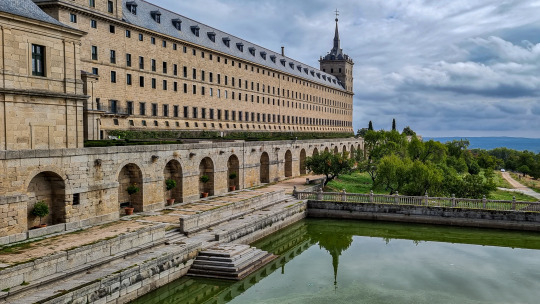
Embark with me on a virtual expedition to the UNESCO World Heritage site of the Monastery and Site of El Escorial in Spain. Let's unravel the secrets of this architectural gem, stroll through its regal corridors, and delve into the historical and spiritual tapestry that makes El Escorial a true testament to human ingenuity.
In 1984, the Monastery and Site of El Escorial was bestowed with UNESCO World Heritage status. This acknowledgment celebrates not only its architectural and artistic prowess but also its role in shaping Spanish cultural and religious identity.
Behold the grandeur of El Escorial, a complex that encompasses a royal palace, a monastery, a museum, and a library. Marvel at its austere yet magnificent facade, symbolizing the marriage of power, religion, and culture.
Step into the Basilica of San Lorenzo, the central place of worship within El Escorial. Admire the colossal altarpiece, the ornate chapels, and the sublime beauty that emanates from every corner of this sacred space.
Descend into the Royal Pantheon, where Spanish monarchs find their eternal repose. The somber yet dignified atmosphere of this underground chamber echoes with the history of the Habsburg and Bourbon dynasties.
Explore the Library and Archives, repositories of wisdom that house priceless manuscripts, rare books, and historical documents. The elegant decor and the scent of aged parchment invite you to immerse yourself in the intellectual legacy of El Escorial.

Wander through the Gardens of the Friars, a serene retreat where manicured lawns and shaded pathways offer a respite from the grandiosity of the main structures. The gardens provide a glimpse into the contemplative life of the monks who once inhabited this sacred space.
Embark on a virtual pilgrimage through El Escorial with online tours, 360-degree views, and digital exhibits. Immerse yourself in the intricate details and profound history of this cultural treasure without stepping outside your virtual sanctuary.
In conclusion, El Escorial invites us to stand witness to centuries of history, spirituality, and artistic achievement. When you're ready for a digital journey through a UNESCO World Heritage site that encapsulates the grandeur of Spanish heritage, El Escorial awaits with open gates. 🏰📜✨🇪🇸
#el escorial#madrid#spain#europe#spanish#heritage#unesco#world heritage#travel#culture#architecture#royal#legacy#treasure
0 notes
Photo
















San Lorenzo de El Escorial Monastery in Spain.
~ “San Lorenzo de El Escorial is a town in the Guadarrama mountains of central Spain. The Monastery of El Escorial is a complex of Renaissance buildings, courtyards and fountains. Its Royal Library contains 15th- and 16th-century manuscripts. Infante's House was once a royal hunting lodge. North, near Mount Abantos, a basilica and stone cross in the Valley of the Fallen honour those who died in the Spanish Civil War.” ~
3 notes
·
View notes
Text
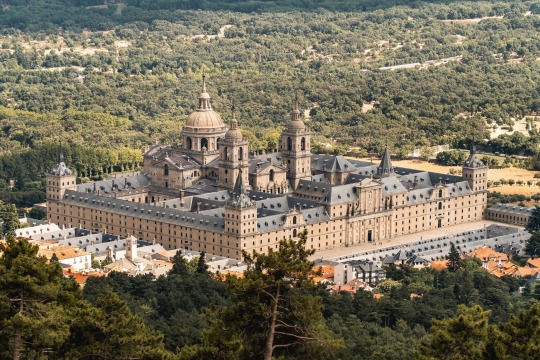
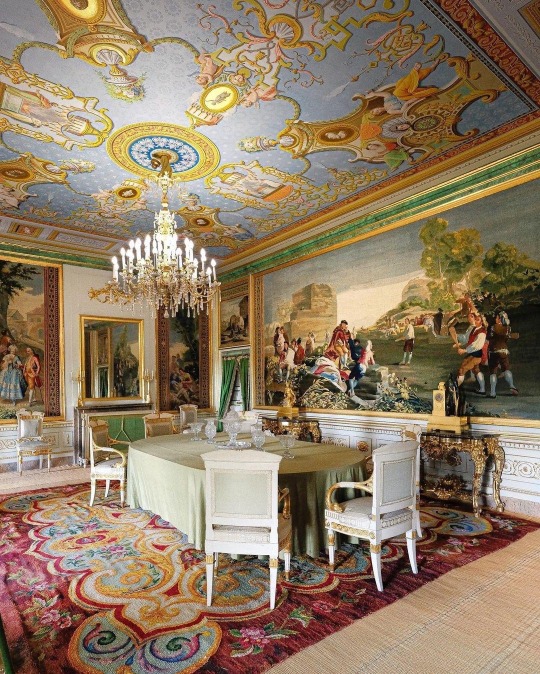
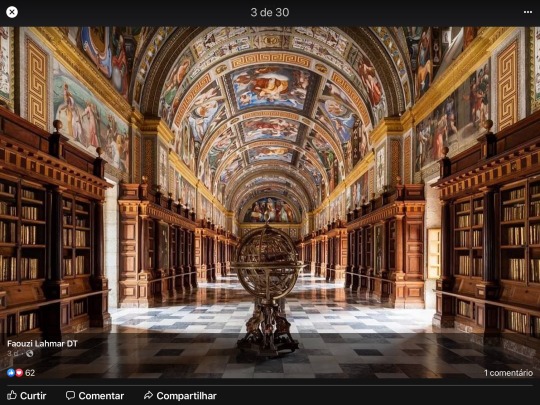
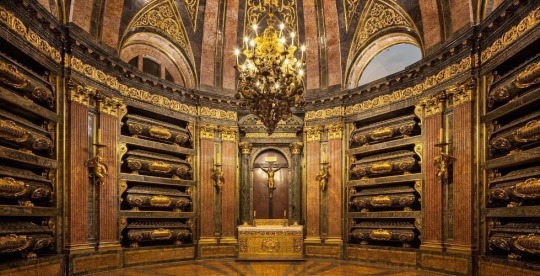
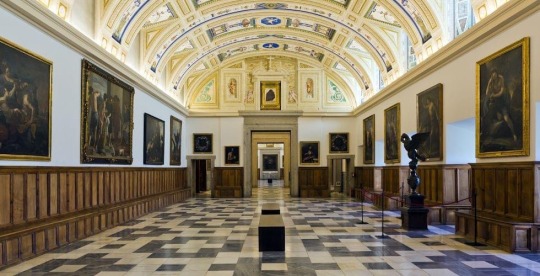
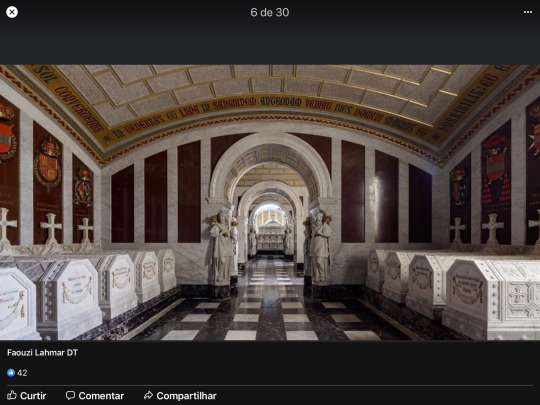

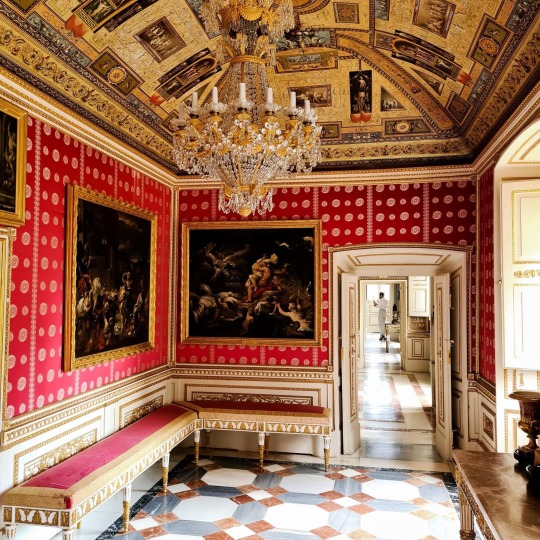
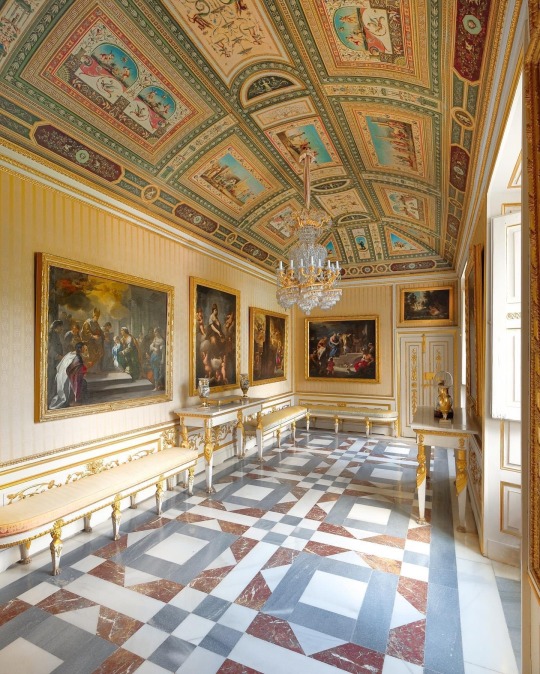
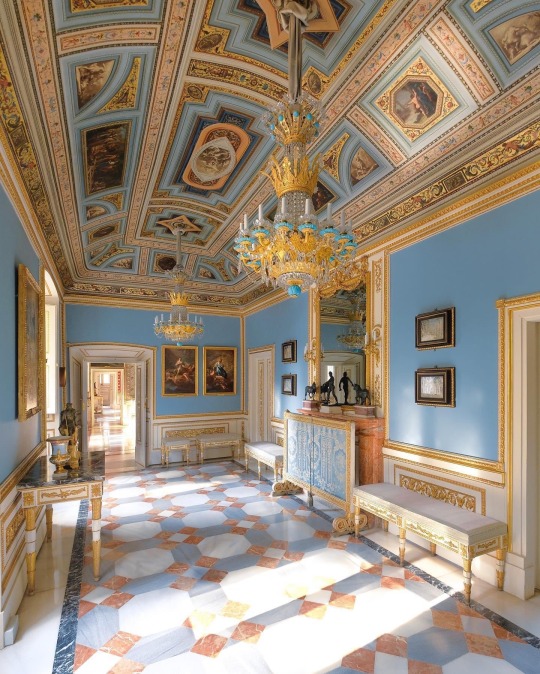
El Escorial, or the Royal Site of San Lorenzo de El Escorial (Spanish: Monasterio y Sitio de El Escorial en Madrid), or Monasterio del Escorial (Spanish pronunciation: [el eskoˈɾjal]), is a historical residence of the King of Spain located in the town of San Lorenzo de El Escorial, 2.06 km (1.28 mi) up the valley (4.1 km [2.5 mi] road distance) from the town of El Escorial and about 45 kilometres (28 miles) northwest of the Spanish capital Madrid. Built between 1563 and 1584 by order of King Philip II (who reigned 1556–1598), El Escorial is the largest Renaissance building in the world. It is one of the Spanish royal sites and functions as a monastery, basilica, royal palace, pantheon, library, museum, university, school, and hospital.
El Escorial consists of two architectural complexes of great historical and cultural significance: the royal monastery itself and La Granjilla de La Fresneda, a royal hunting lodge and monastic retreat about 5 kilometres away. These sites have a dual nature: during the 16th and 17th centuries, they were places in which the power of the Spanish monarchy and the ecclesiastical predominance of the Roman Catholic religion in Spain found a common architectural manifestation. El Escorial was both a Spanish royal palace and a monastery, although Philip II is the only monarch who ever lived in the main building. Established with a community of Hieronymite monks, it has become a monastery of the Order of Saint Augustine. It was also a boarding school: the Real Colegio de Alfonso XII.
Philip II engaged the Spanish architect Juan Bautista de Toledo to be his collaborator in the building of the complex at El Escorial. Toledo had spent the greater part of his career in Rome, where he had worked on St. Peter's Basilica, and in Naples serving the king's viceroy, whose recommendation brought him to the king's attention. Philip appointed him architect-royal in 1559, and together they designed El Escorial as a monument to Spain's role as a center of the Christian world.
On 2 November 1984, UNESCO declared The Royal Seat of San Lorenzo of El Escorial a World Heritage Site. It is a popular tourist attraction, often visited by day-trippers from Madrid – more than 500,000 visitors come to El Escorial every year.
El Real Monasterio de San Lorenzo de El Escorial es un complejo que incluye un palacio real, una basílica, un panteón, una biblioteca, un colegio y un monasterio. Se encuentra en la localidad española de San Lorenzo de El Escorial, en la Comunidad de Madrid, y fue construido en el siglo xvi entre 1563 y 1584.
El palacio fue residencia de la familia real española, la basílica es lugar de sepultura de los reyes de España y el monasterio –fundado por monjes de la Orden de San Jerónimo– está ocupado actualmente por frailes de la Orden de San Agustín. Es una de las más singulares arquitecturas renacentistas de España y de Europa. Situado en San Lorenzo de El Escorial, ocupa una superficie de 33 327 m², sobre la ladera meridional del monte Abantos, a 1028 m de altitud, en la sierra de Guadarrama. Está gestionado por Patrimonio Nacional.
Conocido también como Monasterio de San Lorenzo El Real, o, sencillamente, El Escorial, fue ideado en la segunda mitad del siglo xvi por el rey Felipe II y su arquitecto Juan Bautista de Toledo, aunque posteriormente intervinieron Juan de Herrera, Juan de Minjares, Giovanni Battista Castello El Bergamasco y Francisco de Mora. El rey concibió un gran complejo multifuncional, monacal y palaciego que, plasmado por Juan Bautista de Toledo según el paradigma de la Traza Universal, dio origen al estilo herreriano.
Fue considerado, desde finales del siglo xvi, la Octava Maravilla del Mundo, tanto por su tamaño y complejidad funcional como por su enorme valor simbólico. Su arquitectura marcó el paso del plateresco renacentista al clasicismo desornamentado. Obra ingente, de gran monumentalidad, es también un receptáculo de las demás artes. Sus pinturas, esculturas, cantorales, pergaminos, ornamentos litúrgicos y demás objetos suntuarios, sacros y áulicos hacen que El Escorial sea también un museo. Su compleja iconografía e iconología ha merecido las más variadas interpretaciones de historiadores, admiradores y críticos. El Escorial es la cristalización de las ideas y de la voluntad de su impulsor, el rey Felipe II, un príncipe renacentista.
El 2 de noviembre de 1984, la UNESCO declaró el Monasterio y Sitio de El Escorial como Patrimonio de la Humanidad. Es una de las principales atracciones turísticas de la Comunidad de Madrid. El conjunto monumental recibe más de 500 000 visitantes al año.
1 note
·
View note
Text
Un Fin de Semana en Salamanca (A Weekend in Salamanca)
This past weekend, my study abroad program organized a trip to Salamanca, which is about 2 hours Northwest of Madrid. On our way to Salamanca, we stopped at El Escorial Monasterio, or the Monastery of El Escorial, to learn more about Spanish history, art and religion. Thankfully, we had a tour guide to tell us all about this wonderful building!
El Escorial was commissioned to be built by King Philip II in the 16th century as a way to thank God for a military victory. This building honors the town's patron saint, San Lorenzo, in its design-- the building was constructed in the shape of a barbeque, to symbolize San Lorenzo's martyrdom by being burned to death. The tour guide would take us into a room, and then describe our location in the barbecue. I've never referred to my geographic location in such a fashion before, so I found that slightly amusing.

A view of one of the courtyards inside El Escorial. I believe that this photo is showing the handle of the barbecue.
We were able to see El Escorial's library full of original manuscripts in all types of languages, the catacombs of past Spanish kings, and famous works of art by numerous different people. The trip through this incredible monastery, coupled with the beautiful view of the surrounding mountains, made this a perfect way to spend our morning on our way to Salamanca.
Our trip to Salamanca was no less impressive. This city is famous for its university there, La Universidad de Salamanca, which is over 800 years old! This is the third oldest university in all of Europe!
We began our trip to this town by examining the famous university, where we saw graffiti that could be 800 years old! Our tour guide told us that it was tradition for students to write their names on the walls of the university if they passed an exam at the end of their studies. This sounded like a pretty cool rite of passage, until our tour guide told us that they supposedly signed their names in blood -- I guess these students really did put their blood, sweat, and tears into their studies.

A picture from the side of one of the buildings at the university. If you look closely enough, you can see the really old signatures from previous students.
After touring the famous university, we also got to visit La Catedral (Cathedral) de Salamanca. This cathedral is comprised of two different sections- an old side and a new side, because an earthquake broke part of the old cathedral in the 18th century. We were able to walk through both parts of the cathedral, and admire all of the artwork and architecture in each part.

Pictured left to right: Margaret, Victoria, and I (all from the U.S.) in front of the cathedral.
We also got to see a pretty cool view from the top of a cathedral's tower, that looked out over the entire city! Since there weren't elevators at the time of the cathedral's constructions, we had to walk up what I estimate to be 58734747383 flights of stairs. This ended up working out to our advantage, though, as that made room for us to try some Argentinian empanadas later in the day. Overall, this was a wonderful, enriching weekend trip! Next week, I am going to Barcelona, and I am excited to tell you all about it!
Nos Vemos Pronto,
Mechanical Engineering
IPE’s Universidad Carlos III de Madrid in Madrid, Spain
2 notes
·
View notes
Photo

🏛How to keep knowledge, a new series from my photo archive. - 📌Finishing this series with the Royal Library in the Monastery of Escorial, probably one of the best around the world in terms of its artistic set. The bookshelves were designed by Juan de Herrera and made by Giuseppe Flecha, Juan Senén and Martín Gamboa between 1586-91. The vault was painted by Pellegrino Tibaldi following the iconographic program of José de Sigüenza. Here, in the bottom of the room, we find “The Philosophy”: in the allegory we can real Plato, Aristoteles or Seneca. @patrimnacional (en Real Monasterio De San Lorenzo De El Escorial) https://www.instagram.com/p/CEXUZ7PgsAW/?igshid=n94d8g2rxv3t
33 notes
·
View notes
Text

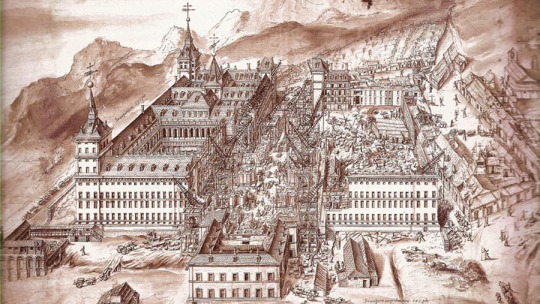



"Even working in haste it took twenty-one years to construct and furnish a palace that would conform exactly to the king’s demanding tastes. Philip gathered the riches of his empire not only for his personal satisfaction but also to honor God and Saint Lawrence, whose grisly martyrdom had inspired the architectural plan and after whom the great church of the Escorial was named. Saint Lawrence had died on a gridiron, and Philip’s palace was laid out accordingly. At the center of the grid was placed the monastery church, hidden, except for its great dome, by the towering walls of monastic cells and royal apartments. In vaults beneath the church rested the family coffins filled with Hapsburg bodies; alongside the church was located Philip’s bedchamber, equipped with a shuttered peephole through which the king could look out on the Hieronymite monks in prayer before the high altar of Saint Lawrence. In lonely eminence, God’s lieutenant on earth wrapped himself in the mantle of divinity and meditated upon the heavy responsibilities of kings. Philip allowed himself a single luxury: As monarch of twenty-seven kingdoms and an empire upon which the sun never set, he could indulge his collector’s instinct, and even before the Escorial was finished, the king had turned it into a vast library and reliquary. Books, manuscripts, relics, oddities, and rarities poured in from agents all over the world. Philip had been educated in the Renaissance tradition of learning; his library with its 30,000 volumes and 4,000 manuscripts was no less precious to him than the shelves upon which were placed in rich settings the arm of Saint Lawrence, two bones of the apostles Philip and James, and the remains of Saint Justus and Saint Pastor. Every facet of Philip’s character found expression in the Escorial - his coldness, his pedantry, his magpie instinct, his austerity, his passion for privacy, and above all, his sense of divine mission. For all his golden locks, Hapsburg chin, and Germanic complexion, Philip was the perfect Spaniard. He was at home in the land of Ignatius Loyola and Saint Theresa and her barefooted Carmelites, where every man’s soul was his castle and the Lord walked “among the pots and pans.”
- The Elizabethan World by Lacey Baldwin Smith
I have to say, for a so called crypt, El Escorial is beyond outstanding. It is f***ing gorgeous. A better breakdown of this architectural jewel is offered in Geoffrey Parker and Henry Kamen's respective biographies of Philip II of Spain. The former historian is critical of him, while the latter excuses some of his poor decisions and flaws. Yet, even Kamen criticizes him without turning him into a Victorian foil by contrasting his failures or religiosity with Queen Elizabeth's pragmatic approach towards the religious divisions in her realm.
And I do not fault Lacey Baldwin Smith, or any other historian for doing this. The book after all focuses on the Elizabethan age and has the purpose on highlighting the accomplishments of her reign and aggrandizing these to overlook Elizabeth's flaws and failures (which are mentioned). But as usual, it is best to read every book, with obvious or honest bias or not, to be read alongside other history or academic works, so readers can see for themselves the architecture discussed is much more than how it is described and make up their minds on historical figures.
30 notes
·
View notes
Text
13 Amazing Places to see in Spain

Spain has incredible destinations to explore and see. With something for almost anyone, Spain is filled with museums, islands, natural spaces, towns, monuments, cities and in addition to a lot of variety, a lot of quantity. The places worth exploring in Spain are innumerable. Choosing only 13 of them has not been easy, and it is possible that some that deserve to be on this list have been left out. But what is certain is that we should all visit these 13 places at least once in our lives. Our list of 13 amazing places to explore in Spain: Trip map created with Wanderlog, a trip planner on iOS and Android
Tenerife
One of the quintessential places to see in Spain and the Canary Islands is the island of Tenerife. An island that is home to a wonderful National Park full of colors, contrasts and landscapes that seem to be from another planet, Mount Teide. Another of its main attractions is a city declared a World Heritage Site, San Cristóbal de la Laguna. And that is not all, there are many more places to see in Tenerife that will make you want to return to it again and again: Anaga, Benijo beach, the Los Gigantes Cliffs, and the Corona Forestal Natural Park.
Sevilla
Special atmosphere, unique color and art are fundamental elements of this city. Here, you can enjoy three fantastic monuments declared World Heritage Sites: the Cathedral, the Archivo de Indias and the Real Alcázar. Additionally, there are many more places to see in Seville that will make you enjoy your visit to the fullest.
San Juan de Gaztelugatxe (Bizkaia)
This spectacular islet is one of the most spectacular landscapes on the Cantabrian coast. The islet, the bridge that joins it to the mainland, the hermitage that crowns it, and the stairs that go up to it form a beautiful sight that we should all see at least once in our lives. In addition, it is a space full of legends and wrapped in very special magic. Will you dare to go up to his hermitage and ring the bell? 241 steps await you, but it will be worth it.
Ronda (Malaga)
Known as "the Dream City", Ronda is another of the essential places to see in Spain. A city that looks out into the void defying gravity and full of places that will remain forever in your memory. One of its most characteristic places is the Tajo de Ronda, a spectacular cliff that crosses and decorates the Puente Nuevo. Would you dare to cross it?
Monastery of El Escorial (Madrid)
In the Community of Madrid is the Monastery of El Escorial, another of the best places to see in Spain. This immense building, declared a World Heritage Site, was built in the 16th century and is in the Herreriano style. In addition to the monastery part, it houses a basilica, a royal palace, a college, a seminary, a library and the royal pantheon. It is one of the best places to see near Madrid, ideal for a day trip from the capital of Spain.
Mallorca
Located in the Balearic Islands, Mallorca has fantastic coves, beaches, and some of the most beautiful towns in Spain. It has noteworthy monuments, privileged natural enclaves and beautiful landscapes that make it a must-visit place to see in Spain. The Serra de Tramuntana deserves a special mention, declared a World Heritage Site and one of the best places to visit in Mallorca.
Madrid
The capital of Spain could not be left out of this list, as there are many places of interest to see in Madrid. The city in which you can find some of the most visited monuments, the busiest squares, and the most important museums in the country. There are many tourist and cultural attractions that Madrid houses and that make it a “must visit” city.
Island of Tabarca (Alicante)
Tabarca Island is a Mediterranean jewel located in front of the city of Alicante. Excursions depart daily from the port of the city that will take you on a one-hour journey to enjoy this wonderful and calm island. A place was worth savouring slowly and perfect for walking, relaxing, breathing clean air, enjoying nature, getting inspired and even diving. Without a doubt, one of the best places to see in Alicante.
Ibiza
The island of Ibiza, in the Balearic Islands, has 85.64 km2 declared a World Heritage Site by UNESCO. Under the name "Ibiza, biodiversity and culture", this area of Ibiza includes natural and cultural spaces, such as the archaeological remains of Sa Caleta and Puig des Molins and Dalt Vita, the historic and fortified center of the city of Ibiza. In addition, there are many remarkable places to see in Ibiza worth visiting this beautiful island.
City of Arts and Sciences (Valencia)
The City of Arts and Sciences is one of the most visited areas and an icon of the city of Valencia. A place where you should dedicate at least one day to get to know the spaces that make it up: the Science Museum, the L'Hemisferic planetarium, the Palau de Les Arts and L'Oceanogràfic. Together with the Lonja de la Seda, the Torres de Serranos and the Plaza Redonda, among others, it is one of the essential things to see in Valencia.
Cáceres
Declared a World Heritage Site, the city of Cáceres has all the necessary sites to be one of the best places to see in Spain. Walking through its streets, you can enjoy beautiful corners and unique monuments, additionally, breathing the history they house, with traces of the five civilizations that inhabited them. The Plaza Mayor here is the nerve center of the city and the perfect place to enjoy all the remarkable places to see in Cáceres.
Barcelona
This is yet another place declared a World Heritage Site. It has beautiful parks, mythical avenues, fantastic neighborhoods and unique monuments that make Barcelona one of the most visited cities in Spain. An open city with a very special atmosphere where it is worth spending a few days.
Basílica del Pilar (Zaragoza)
Although there are many interesting places to see in Zaragoza, there is no doubt that the Basilica del Pilar is the most important icon of the city. An immense church that, in addition to contemplating its beautiful exterior architecture, you must access to discover the beauty and curiosities that it keeps.
Our Final Word
Spain is filled with cultural, historic and just plain fun cities. Travel has never been easier with direct flights from most major east coast cities, and we recommend just renting a car and exploring the towns and villages along the way. Whether you want to head to the beach, explore an historic town, see classic architecture, try some fantastic wine, or just relax and see where the day takes you, Spain has it all. We are already planning our next trip to Spain and we hope to see you there.
Related Posts
Read the full article
0 notes
Text
Most Interesting Places to Visit in Spain
Spain is far more diversified than just flamenco and matadors. Expect a healthy amount of history, wonderful food, and sunshine. Spain has a lively energy and a unique blend of past and present that is captivating. Discover Catalan culture, along with Antoni Gaudi's surreal architecture, try some tapas, discover the legacy of Moorish architecture, explore the Roman ruins all over the country, relaxing vacation in Ibiza are some of the activities you can indulge in while in the Iberian country.
With this list of the greatest and most interesting attractions in Spain, you can plan your tours and find fun things to do.
The Prado and Paseo del Artes (Madrid)
The Prado is one of the world's best art museums, with one of the most priceless art collections. However, when you combine the Reina Sofia National Art Museum, the Thyssen-Bornemisza Museum, and the CaixaForum, all of which are located along Madrid's mile-long, - boulevard, you get what is possibly the world's highest concentration of the most valuable art masterpieces.
San Lorenzo de El Escorial (Madrid)
San Lorenzo de El Escorial was the summer residence of Spanish kings, and it houses a monastery, chapel, royal palace, mausoleum, library, and museum dedicated to Philip II. The result is a mind-boggling collection of attractions organized around 16 courtyards and linked by 16 kilometers of passageways. Hieronymus Bosch, Albrecht Dürer, Titian, Tintoretto, Veronese, Velázquez, and El Greco are among the artists whose works you can find in the Picture Gallery.
Basílica de la Sagrada Família (Barcelona)
Antoni Gaudi pushed the Art Nouveau architectural style a step further, and the colorful and extravagant structures he designed in Barcelona have become well-known monuments. The Sagrada Familia is a symbol of Barcelona's skyline and one of Antoni Gaudi's most famous works. It is a popular tourist destination in Barcelona and one of the most magnificent monuments ever constructed. Any tours of Barcelona are incomplete if you don’t witness the colossal monument towering over the city with your own eyes. This Basilica brings visions from the bible alive on the exterior.
Park Güell (Barcelona)
Antoni Gaudi’s surrealist park is full of vibrant colors and a whimsical atmosphere. You can find beautiful fountains, viaducts, grottoes, a colonnaded hall, winding staircases, and semi-closed benches throughout the park, which makes it a great picnic spot and a wonderful location to spend a beautiful sunny day in Barcelona. There’s also a spectacular terrace that offers stunning vistas of the city and the sea, and the artistic structures adorned with multicolored ceramic bits lend a very cheerful and lively look to the park.
Guggenheim Museum (Bilbao)
You have to see this edifice to believe it; no picture or photos can do justice to this harmony of shapes, which appear to be ready to take flight. Frank Gehry turned the concept of modern architecture on its head by constructing this building. Inside the museum, there are visiting exhibitions and rotating displays of the museum's modern art collections.
The Great Mosque of Cordoba (Mezquita)
Cordoba's mosque, once known as the Mezquita and still called as such, is one of the world's largest and the greatest example of Moorish architecture in Spain. Despite later changes that hollowed out its center to erect a Catholic cathedral at its core, the Great Mosque is one of the two most magnificent specimens of Islamic art and architecture in Western Europe, alongside the Alhambra in Granada.
0 notes
Text
Most Interesting Places to Visit in Spain
Spain is far more diversified than just flamenco and matadors. Expect a healthy amount of history, wonderful food, and sunshine. Spain has a lively energy and a unique blend of past and present that is captivating. Discover Catalan culture, along with Antoni Gaudi's surreal architecture, try some tapas, discover the legacy of Moorish architecture, explore the Roman ruins all over the country, relaxing vacation in Ibiza are some of the activities you can indulge in while in the Iberian country.
With this list of the greatest and most interesting attractions in Spain, you can plan your tours and find fun things to do.
1. The Prado and Paseo del Artes (Madrid)
The Prado is one of the world's best art museums, with one of the most priceless art collections. However, when you combine the Reina Sofia National Art Museum, the Thyssen-Bornemisza Museum, and the CaixaForum, all of which are located along Madrid's mile-long, - boulevard, you get what is possibly the world's highest concentration of the most valuable art masterpieces.
2. San Lorenzo de El Escorial (Madrid)
San Lorenzo de El Escorial was the summer residence of Spanish kings, and it houses a monastery, chapel, royal palace, mausoleum, library, and museum dedicated to Philip II. The result is a mind-boggling collection of attractions organized around 16 courtyards and linked by 16 kilometers of passageways. Hieronymus Bosch, Albrecht Dürer, Titian, Tintoretto, Veronese, Velázquez, and El Greco are among the artists whose works you can find in the Picture Gallery.
3. Basílica de la Sagrada Família (Barcelona)
Antoni Gaudi pushed the Art Nouveau architectural style a step further, and the colorful and extravagant structures he designed in Barcelona have become well-known monuments. The Sagrada Familia is a symbol of Barcelona's skyline and one of Antoni Gaudi's most famous works. It is a popular tourist destination in Barcelona and one of the most magnificent monuments ever constructed. Any tours of Barcelona are incomplete if you don’t witness the colossal monument towering over the city with your own eyes. This Basilica brings visions from the bible alive on the exterior.
4. Park Güell (Barcelona)
Antoni Gaudi’s surrealist park is full of vibrant colors and a whimsical atmosphere. You can find beautiful fountains, viaducts, grottoes, a colonnaded hall, winding staircases, and semi-closed benches throughout the park, which makes it a great picnic spot and a wonderful location to spend a beautiful sunny day in Barcelona. There’s also a spectacular terrace that offers stunning vistas of the city and the sea, and the artistic structures adorned with multicolored ceramic bits lend a very cheerful and lively look to the park.
5. Guggenheim Museum (Bilbao)
You have to see this edifice to believe it; no picture or photos can do justice to this harmony of shapes, which appear to be ready to take flight. Frank Gehry turned the concept of modern architecture on its head by constructing this building. Inside the museum, there are visiting exhibitions and rotating displays of the museum's modern art collections.6. The Great Mosque of Cordoba (Mezquita)
Cordoba's mosque, once known as the Mezquita and still called as such, is one of the world's largest and the greatest example of Moorish architecture in Spain. Despite later changes that hollowed out its centre to erect a Catholic cathedral at its core, the Great Mosque is one of the two most magnificent specimens of Islamic art and architecture in Western Europe, alongside the Alhambra in Granada.
1 note
·
View note
Text
El Escorial - The world's largest Renaissance building in San Lorenzo de El Escorial
El Escorial – The world’s largest Renaissance building in San Lorenzo de El Escorial
Built between 1563 and 1584 by order of King Philip II. It is one of the Spanish royal sites and functions as a monastery, basilica, royal palace, pantheon, library, museum, university, school, and hospital. El Escorial was both a Spanish royal palace and a monastery, although Philip II is the only monarch who ever lived in the main building. Established with a community of Hieronymite monks, it��

View On WordPress
0 notes
Text







- Vault of the library of the monastery of San Lorenzo de El Escorial, Madrid Spain.
- Dome of the Royal Chapel of the Royal Palace of Madrid Spain
- Ceiling of Diane's Salon inside the Palace of Versailles, Versailles France
- Vault of the Arab Cabinet of the Royal Palace of Aranjuez, Madrid Spain (created between 1848-1850)
- Vault of the Relics chapel and Royal cenotaph of the Royal Collegiate Church of Santisisma Trinidad.
- Royal Palace of La Granja, Madrid Spain
- Main staircase of the Royal Palace of Madrid Spain
- Ceiling of the Royal Chapel of the Royal Palace in Stockholm Sweden.
https://www.instagram.com/p/B8ZlfB6IV7e/?igshid=1cv5wk7cp4dop
https://www.instagram.com/p/B6OI5WGI4-M/?igshid=cu6sqequ229v
77 notes
·
View notes
Photo

@Neoprusiano Real Monasterio de San Lorenzo de El Escorial (Madrid, España) Royal Monastery of San Lorenzo de El Escorial (Madrid, Spain)
Biblioteca Real Royal Library
#Edificio#Imperio Español#Spanish Empire#España#Spain#Palacio#Palace#Monasterio#Monastery#Real Monasterio de San Lorenzo de El Escorial#Royal Monastery of San Lorenzo de El Escorial#Madrid#San Lorenzo de El Escorial#Felipe II de España
1K notes
·
View notes
Photo










Spanish Testament (Monasterio y Sitio de El Escorial en Madrid)
“The Royal Site of San Lorenzo de El Escorial (Spanish: Monasterio y Sitio de El Escorial en Madrid), commonly known as El Escorial (Spanish pronunciation: [el eskoˈɾi̯al]), is a historical residence of the King of Spain, in the town of San Lorenzo de El Escorial, about 45 kilometres (28 miles) northwest of the capital, Madrid, in Spain. It is one of the Spanish royal sites and has functioned as a monastery, basilica, royal palace, pantheon, library, museum, university and hospital. It is situated 2.06 km (1.28 mi) up the valley (4.1 km [2.5 mi] road distance) from the town of El Escorial.The Escorial comprises two architectural complexes of great historical and cultural significance: the royal monastery itself and La Granjilla de La Fresneda, a royal hunting lodge and monastic retreat about five kilometres away. These sites have a dual nature; that is to say, during the 16th and 17th centuries, they were places in which the power of the Spanish monarchy and the ecclesiastical predominance of the Roman Catholic religion in Spain found a common architectural manifestation.[1] El Escorial was, at once, a monastery and a Spanish royal palace. Originally a property of the Hieronymite monks, it is now a monastery of the Order of Saint Augustine. It is also a boarding school.[2]Philip II of Spain, reacting to the Protestant Reformation sweeping through Europe during the 16th century, devoted much of his lengthy reign (1556–1598) and much of his seemingly inexhaustible supply of New World gold to stemming the Protestant tide. His protracted efforts were, in the long run, partly successful; however, the same counter-reformational impulse had a much more benign expression thirty years earlier in Philip's decision to build the complex at El Escorial.Philip engaged the Spanish architect, Juan Bautista de Toledo, to be his collaborator in the design of El Escorial. Juan Bautista had spent the greater part of his career in Rome, where he had worked on the basilica of St. Peter's, and in Naples, where he had served the king's viceroy, whose recommendation brought him to the king's attention. Philip appointed him architect-royal in 1559, and together they designed El Escorial as a monument to Spain's role as a center of the Christian world.[3]On 2 November 1984, UNESCO declared The Royal Seat of San Lorenzo of El Escorial a World Heritage Site. It is a popular tourist attraction, often visited by day-trippers from Madrid – more than 500,000 visitors come to El Escorial every year.”
168 notes
·
View notes
Photo

Hope you're having a Happy #WorldBookDay! This is the exquisite Royal Library of the Monastery of San Lorenzo de El Escorial in Spain.📜📖🖋 "The Royal Monastery of San Lorenzo de El Escorial is a large complex near Madrid. One of the most important architectural monuments of the Spanish Renaissance, the site is home to a church, monastery, royal palace, college and library, which were built in a quadrangle. Tickets allow visitors to gaze at the library’s ornately-finished ceilings and ancient manuscripts." (Source: Image by DeAgostini/ Getty Images; via lonelyplanet.com)📚 #WorldBookDay #books #history #writer #amwriting #photography #Spain #art #painting #architecture #goodreads #library #writersofinstagram #journals #nonfiction #biography #memoirs #literature #bookstagram #HappyWorldBookDay 📚🎉 https://www.instagram.com/inknscroll/p/BwniibQHVvw/?utm_source=ig_tumblr_share&igshid=yucgz3r3b06b
#worldbookday#books#history#writer#amwriting#photography#spain#art#painting#architecture#goodreads#library#writersofinstagram#journals#nonfiction#biography#memoirs#literature#bookstagram#happyworldbookday
0 notes